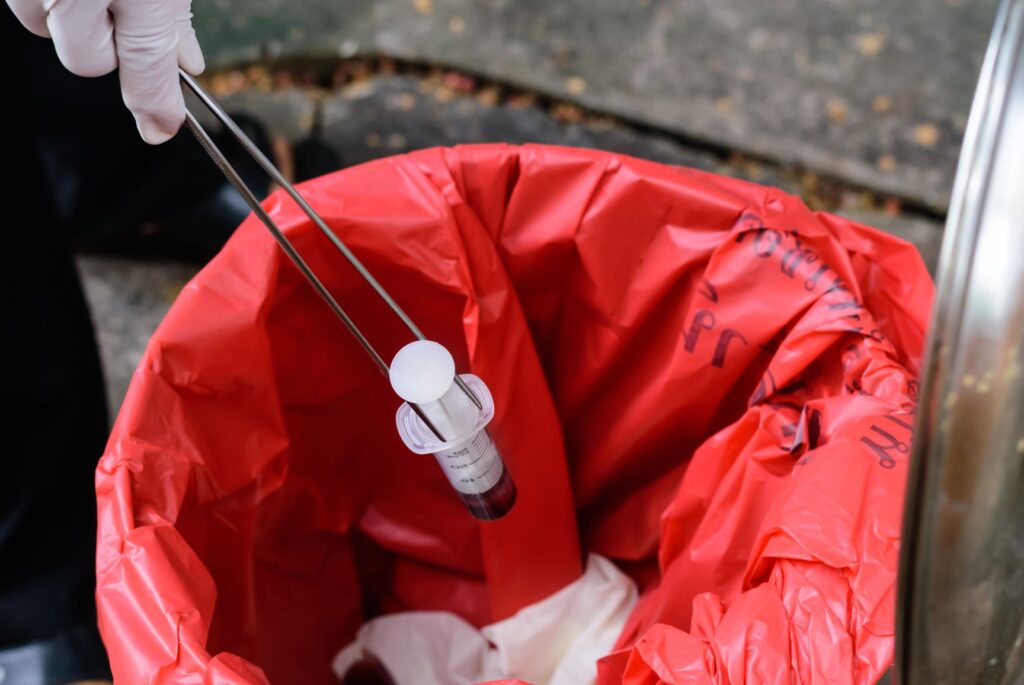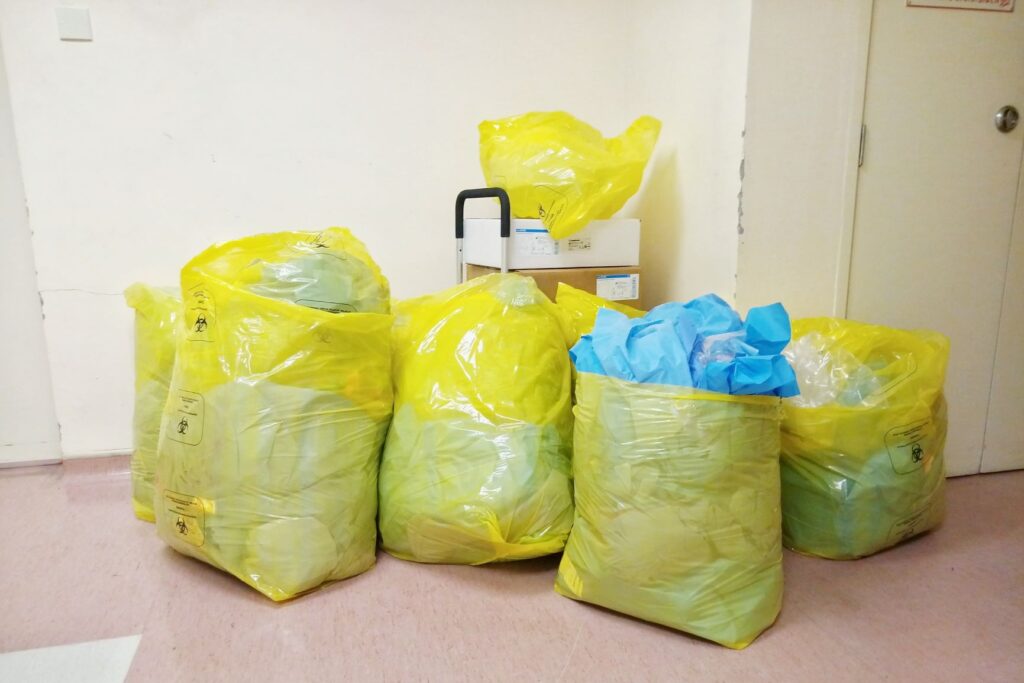Coronavirus Disease 2019 (COVID-19) Ambulatory Care Settings

As the coronavirus outbreak spreads globally, healthcare providers and facilities need to exercise caution in handling waste generated from caring for infected or potentially infectious patients.
When it comes to ambulatory care settings, extra safety measures are required to minimize or eradicate the virus’s risks. This is particularly regarding how best to dispose of waste arising from these scenarios.
Luckily, public health authorities like the Center for Disease Control (CDC) and World Health Organization (WHO) have provided some guidelines for adequately managing waste generated from COVID-19 patients and healthcare facilities.
It’s worth mentioning that there are only very slight changes in these recommendations compared to general practices for health waste management.
Ambulatory care settings have played a major role in responding to healthcare needs during the coronavirus outbreak. Because of the limitations imposed by social distancing, medical staff has also adopted telemedicine. This is an excellent way to reduce face-to-face contact with patients without dropping the ball on efficient medical care.
Ambulatory care settings are typically where health services or acute care services are provided on an outpatient basis. It includes but is not limited to community health centers, retail clinics co-located in pharmacies, grocery stores, hospital-based outpatient clinics, and non-hospital-based clinics.
This article explores the best practices – based on professional recommendations – for handling and getting rid of COVID-19 waste, especially in ambulatory care settings.
These recommendations are generally applicable. Most countries have specific procedures on handling medical waste, and in most cases, it’s just the same thing that we hope to achieve – efficient waste disposal. For countries that do not have existing waste disposal protocols, the guideline provided here can be applied. They can also be used to complement already existing waste disposal protocols.
If you need professional opinion regarding ambulatory care settings relating to waste, Reduction In Motion can help.
The World Health Organization (WHO) advises that healthcare systems that are already exercising best practices for infectious waste will also manage waste potentially infected with the coronavirus.
If you want to reduce the amount of waste you generate, read our waste reduction guide.
However, before we delve further into this, let’s review the standard recommendations for ambulatory care systems in handling community transmission of COVID-19.
Key Considerations
- To preserve staff, personal protective equipment, and patient care supplies and ensure patient and healthcare providers’ safety, healthcare facilities are advised to delay elective ambulatory provider visits and implement safer service delivery models such as telemedicine.In the case of routine ambulatory services that cannot be performed virtually, such as adult immunizations, lipid screenings, and cancer screenings, providers should consider postponing unless the risks of postponement pose a danger to the health of the patient.
- For the acutely ill, alternatives to face-to-face triage and visits should be used. The suggestions provided below can reduce in-person healthcare visits to facilities. This is aimed at reducing the chances of further spread of the infection.
- Patients can use the facility’s available telephone advice lines, patient portals, and online self-assessment tools. Alternatively, they can call and speak directly to in-clinic healthcare personnel if they get sick with symptoms such as fever, cough, or shortness of breath.
- Identify sufficient healthcare personnel that can conduct telehealth interactions with patients.
- Finally, healthcare providers should create protocols that allow healthcare personnel to triage and assess patients before entering the facility or immediately as they enter.
- Develop and implement procedures that identify patients who have respiratory symptoms arising from COVID-19 infections, and quickly move them to appropriate facilities for care.
- Facilities should implement algorithms to determine which of the patients with respiratory symptoms that may have resulted from COVID-19 can be managed over the telephone.The idea is to have them stay at home instead of visiting the facility. To achieve an optimal result, facilities should
- Assess the patient’s ability to safely self-isolate at home, carry out home monitoring, and risk possible transmission to other people in the patient’s home and environment.
- Provide clear instructions to caregivers and sick persons to quickly access the healthcare system for face-to-face care.
- Healthcare personnel should also be assigned to monitor patients that have been advised to stay at home through daily “check-ins.”
- Engage local healthcare facilities and community to assist patients who are under home treatment
- Prioritize safety by ensuring an adequate supply of essentials such as face masks to accurately triage and manage patients with symptoms, sanitizers, waste receptacles, hand soaps, and visual prompts to encourage hygienic practices. Also, efforts should be made towards decongesting waiting rooms.
- Healthcare facilities should work with local and state public health organizations to ascertain the outbreak’s reach and impact in your area. Local partners and other health coalitions can also be engaged to understand the crisis standards of care initiatives implemented.
- Be sure to prepare for emergencies by keeping an adequate supply of personal protective equipment.
Safe Management Of Healthcare Waste

Safely managing healthcare waste, especially those generated from infected or potentially infectious COVID-19 patients should be treated following best practices. This should include capacity building for personnel handling the waste, assigning responsibility, and providing sufficient human and material resources to safely separate and get rid of the trash.
While there’s no evidence that direct, unprotected contact with healthcare waste will result in the transmission of the COVID-19 virus – according to WHO – it is advised that handlers wear protective gear at all times. This is because all healthcare waste produced during the care of infectious diseases, including confirmed COVID-19 cases, is considered to be infectious.
This kind of waste should be handled carefully by adequately trained personnel. They should be collected safely in clearly marked containers. Such waste should be treated, preferably on-site, and then carefully disposed of. If the waste is moved off-site before treatment, it is best to have a designated area where it can be stored safely before being picked up and transported for final disposal.
Learn more about our workplace waste management solutions to have a better idea on how to safely manage waste streams.
However, waste generated in the waiting regions of healthcare facilities can be classified as non-hazardous. It should be disposed of in waste bags before they’re collected for disposal.
Most importantly, all personnel who handle waste generated in healthcare facilities should be trained. They should wear appropriate PPE (personal protective equipment) such as boots, gowns, gloves, masks, and face shields.
Safety measures such as hand hygiene should be observed after removing the waste. Healthcare waste handlers should also guard against the possible spread of COVID-19 through PPE.
Waste treatment technologies, such as autoclaving or burning in high-temperature incinerators, are most popularly used for healthcare waste treatment. However, it’s important to note that both the WHO and the United Nations Environment Program (UNEP) have endorsed steam-based waste treatment methods. It also includes other methods of disinfection, which does not necessarily involve incineration.
Non-incineration is preferably recommended because of the persistent organic pollutants (POPs) produced by incineration. Also, incineration is way more expensive than steam-based methods such as autoclaving, and it has a higher carbon footprint.
Healthcare facilities should also ensure that they provide an adequate supply of protective gear for all staff, including those providing healthcare and others handling waste generated. In addition to these, provision should be made for vaccination against tetanus, hepatitis, and post exposure prophylaxis.
If you can hire an expert to help you safely manage your waste, it would be better. It helps to keep you and your employees safe.
Generally, the following procedures can be adopted for treating waste generated during COVID-19 patient care.
- Wastes should be segregated or separated at the source.
- Wastes from coronavirus cases should be treated as infectious waste would be treated.
- The waste should be deposited in a bin with a color code for easy identification and to to avoid mix-ups
- The waste should be collected daily if possible and transported in leak-proof, puncture-proof containers labeled with the biohazard symbol.
- The storage areas should be clean, secure, and protected from weather, pests, and disease vectors such as rodents.
- It is best to disinfect the waste by non-incineration technology (e.g., autoclaving or microwaving) before disposal to reduce contamination risks.
- After disinfection, the waste may then be disposed of.
In addition to the above, personal protective equipment (PPE) worn by workers should be properly taken care of.
Outside the facilities, masks, PPE, and other non-biodegradable COVID-19 related waste can be collected separately, double bagged, and labeled with the date.
Since the virus does not live long outside the body, it is unnecessary to disinfect them first. To avoid illegal reuse of these materials, they can be cut or mutilated before they’re disposed of.
Also note that healthcare waste handling instructions vary from country to country, so you may want to check with your country’s authorities for specific guidelines. Further details can be extracted from the WHO website.
Final Words
Proper disposal of waste generated in COVID-19 patient care or potentially infectious cases should be done carefully. It is just as important as preventing the infection or treating infected patients.

The possibility of increased spread due to poor waste handling is real, even in ambulatory care settings. Hence, as healthcare professionals focus on delivering efficient medical care to patients, the proper handling of waste generated should also be ensured.

Our team of sustainability and waste consultants work together to develop content for our site. Contact us to learn more about something we’ve written about or would like us to focus on in the future.

